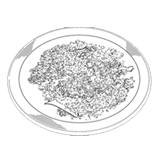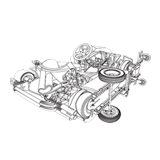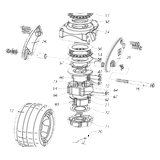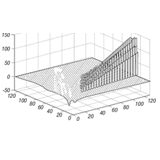
Patent Illustrations
The Patents Act 1977 states that a patent application cannot be granted unless it describes an intention fully enough and clearly enough for someone else to be able to carry it out. In short, if the information is not sufficient – the application will be refused.
Patent drawings or illustrations in patent applications are the visual form of Patent description or Invention; they aid in understanding the invention clearly. They may include illustration of embodiments, stages, flow charts, chemical equations, several views, reference numbers and photographs (in some cases) of the invention.
The drawings may be required by the law to be in a particular form, and the requirements may vary depending on the jurisdiction. The drawings must preferably show every feature of the invention as specified in the claims. Although it may be noted that inclusion of drawings in a patent application is not mandatory.
The United States Government categories three kinds of patents, all of which have specific criteria for submitting drawings as an essential part of the application process. Here is a brief introduction to the different kinds of patents:
01 Utility Patents
These types of patents are granted based on the functional elements of the article. They cover the discovery, invention or useful improvement of a machine process, manufacture or chemical composition. In the simplest of terms, a utility patent protects the way the article works. For utility patents, every feature of the invention must appear in the drawing and be clearly labeled.
02 Design Patents
These patents focus on the ornamental elements of the article in question. They cover the shape or configuration and the surface decoration of an article of manufacture. In short, design patents protect the way an article looks. Drawings for design patents begin with a drawing disclosure that illustrates the claimed design. This disclosure serves to protect the appearance described in the drawing itself.
03 Trademark Logos
A trademark, trade mark, or trade-markis a recognizable sign, design, or expression which identifies products or services of a particular source from those of others, although trademarks used to identify services are usually called service marks. The trademark owner can be an individual, business organization, or any legal entity. A trademark may be located on a package, a label, a voucher, or on the product itself. For the sake of corporate identity, trademarks are being displayed on company buildings.
SIGNIFICANCE
Patent drawings or illustrations in patent applications are the visual form of Patent description or Invention; they aid in understanding the invention clearly. They may include illustration of embodiments, stages, flow charts, chemical equations, several views, reference numbers and photographs (in some cases) of the invention.
The drawings may be required by the law to be in a particular form, and the requirements may vary depending on the jurisdiction. The drawings must preferably show every feature of the invention as specified in the claims. Although it may be noted that inclusion of drawings in a patent application is not mandatory.
Importance’s of Patent Drawings
While including drawings is not mandatory, one may be able to appreciate the importance of providing drawings in a patent application in view of the below example
Description provided in a patent document
A spatial logical toy is formed from a total of eighteen toy elements, out of which two sets of eight identical toy elements two connecting elements are provided. The elements of the two sets have cam members with hollows with spherical convex or concave surfaces in-between. The elements are connected by the aid of the cams and the two remaining centrally positioned substantially identical connecting elements each having a T-shape cross-section and when assembled the toy is in the form of a regular or an irregular solid.
Fixation is performed by one single screw passing through bores in the connecting elements. In such a manner the toy elements forming the lateral faces of the spatial logical toy can be rotated along the spatial axes and by yielding several variation possibilities the toy is well suitable for stimulating logical thinking activity.
it is important to acknowledge that patent drawings/illustrations have to comply with certain predefined standards. Failure to comply with the standards, and lack of knowledge and skill required for creating patent drawings can lead to objections being raised during patent examination, thereby resulting in increased patent prosecution time and cost.
USPTO GUIDELINES
- Drawings shall be executed in durable, black, sufficiently dense and dark, uniformly thick and well-defined, lines and strokes without colorings.
- The scale of the drawings and the distinctness of their graphical execution shall be such that a photographic reproduction with a linear reduction in size to two-thirds would enable all details to be distinguished without difficulty.
- All numbers, letters and reference lines, appearing on the drawings, shall be simple and clear. Brackets, circles or inverted commas shall not be used in association with numbers and letters.
- Each element of each figure shall be in proper proportion to each of the other elements in the figure, except where the use of a different proportion is indispensable for the clarity of the figure.
- The same sheet of drawings may contain several figures. Where figures on two or more sheets form in effect a single complete figure, the figures on the several sheets shall be so arranged that the complete figure can be assembled without concealing any part of any of the figures appearing on the various sheets.
- The different figures shall be numbered in Arabic numerals consecutively and independently of the numbering of the sheets.
- The same features, when denoted by reference signs, shall, throughout the international application, be denoted by the same signs.
- Cross-sections shall be indicated by oblique hatching which should not impede the clear reading of the reference signs and leading lines.
- When, in exceptional cases, the scale is given on a drawing, it shall be represented graphically.
- All lines in the drawings shall, ordinarily, be drawn with the aid of drafting instruments.
- The height of the numbers and letters shall not be less than 0.32 cm. For the lettering of drawings, the Latin and, where customary, the Greek alphabets shall be used.
- The different figures shall be arranged on a sheet or sheets without wasting space, preferably in an upright position, clearly separated from one another. Where the figures are not arranged in an upright position, they shall be presented sideways with the top of the figures at the left side of the sheet.
- Reference signs not mentioned in the description shall not appear in the drawings, and vice versa.
- If the drawings contain a large number of reference signs, it is strongly recommended to attach a separate sheet listing all reference signs and the features denoted by them.
Source:- USPTO WEBSITE
Clients
Patent Drawings
Patent Drawings
Patent Drawings
















